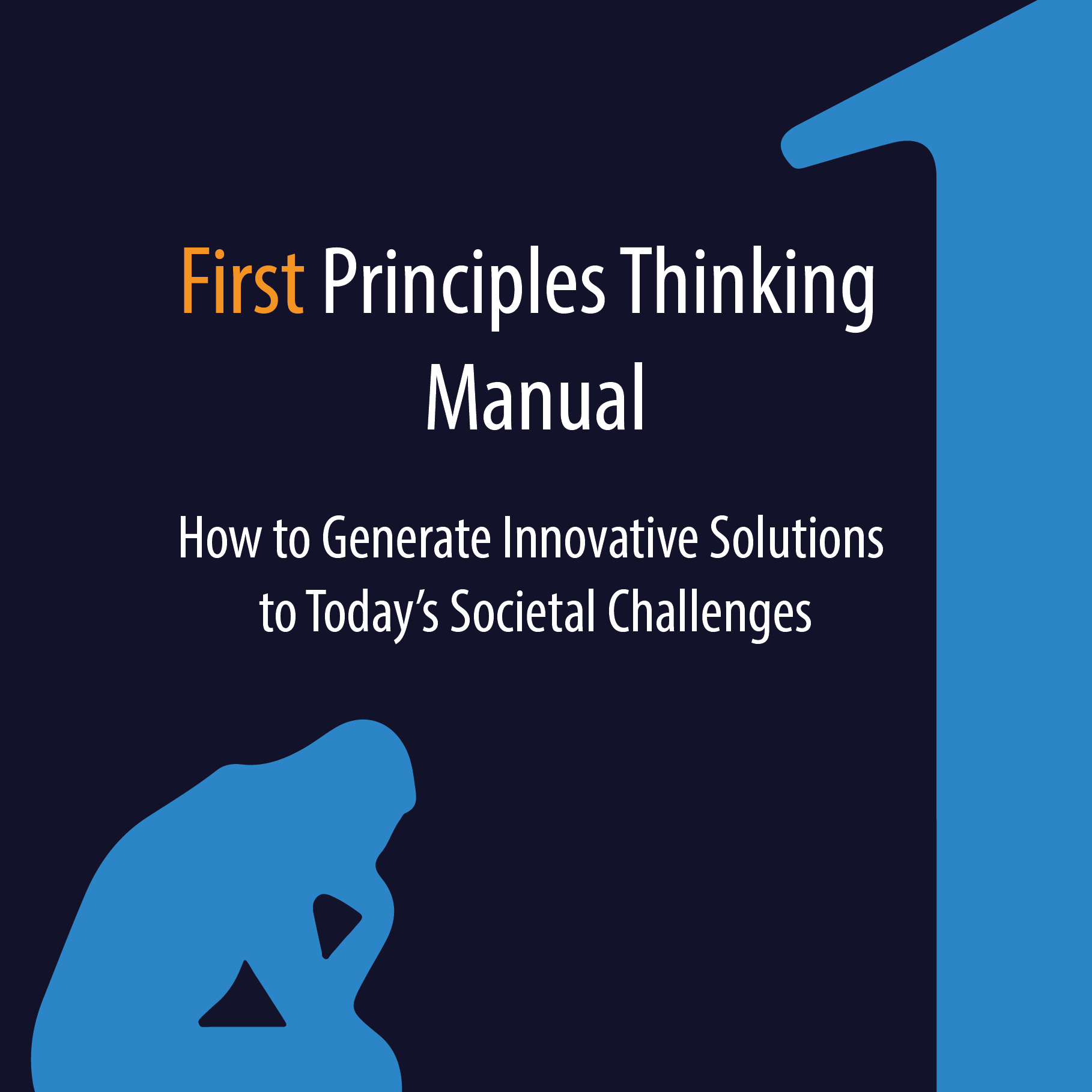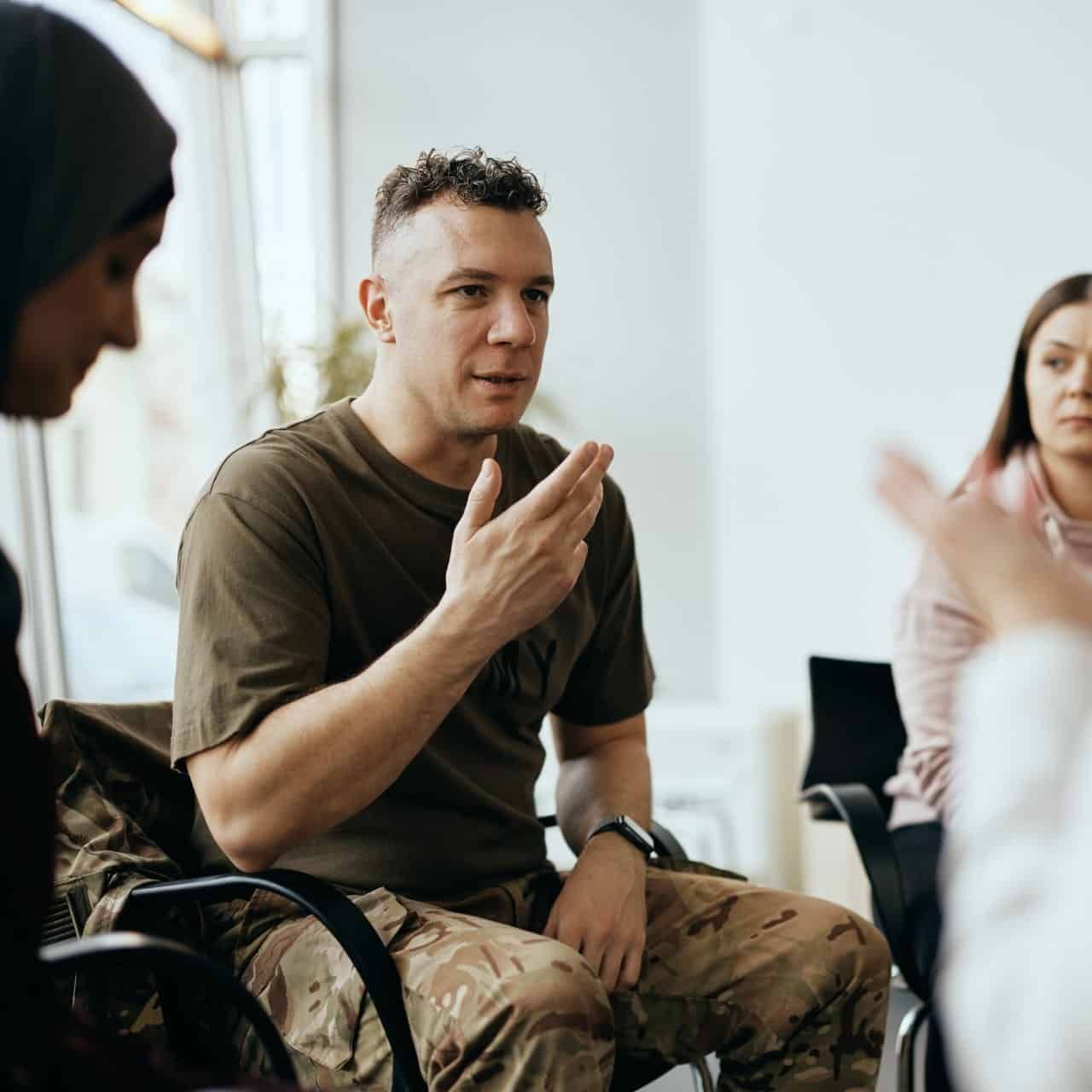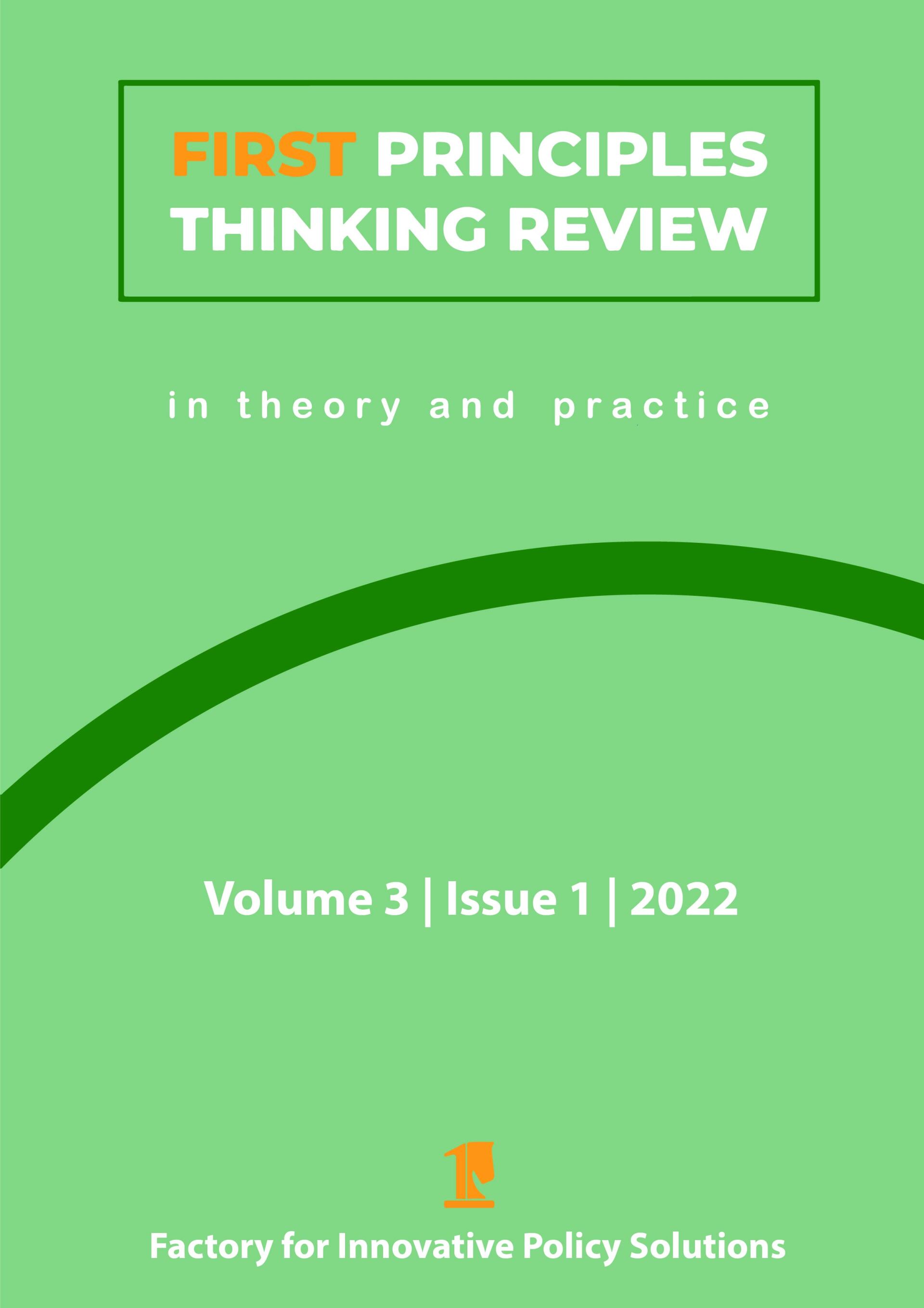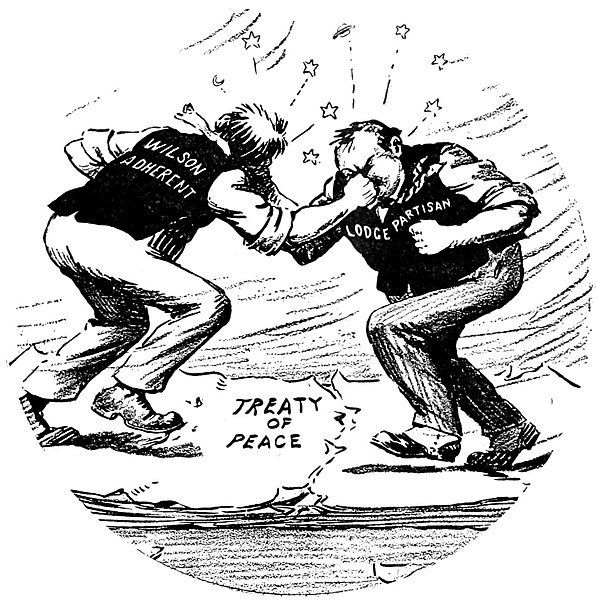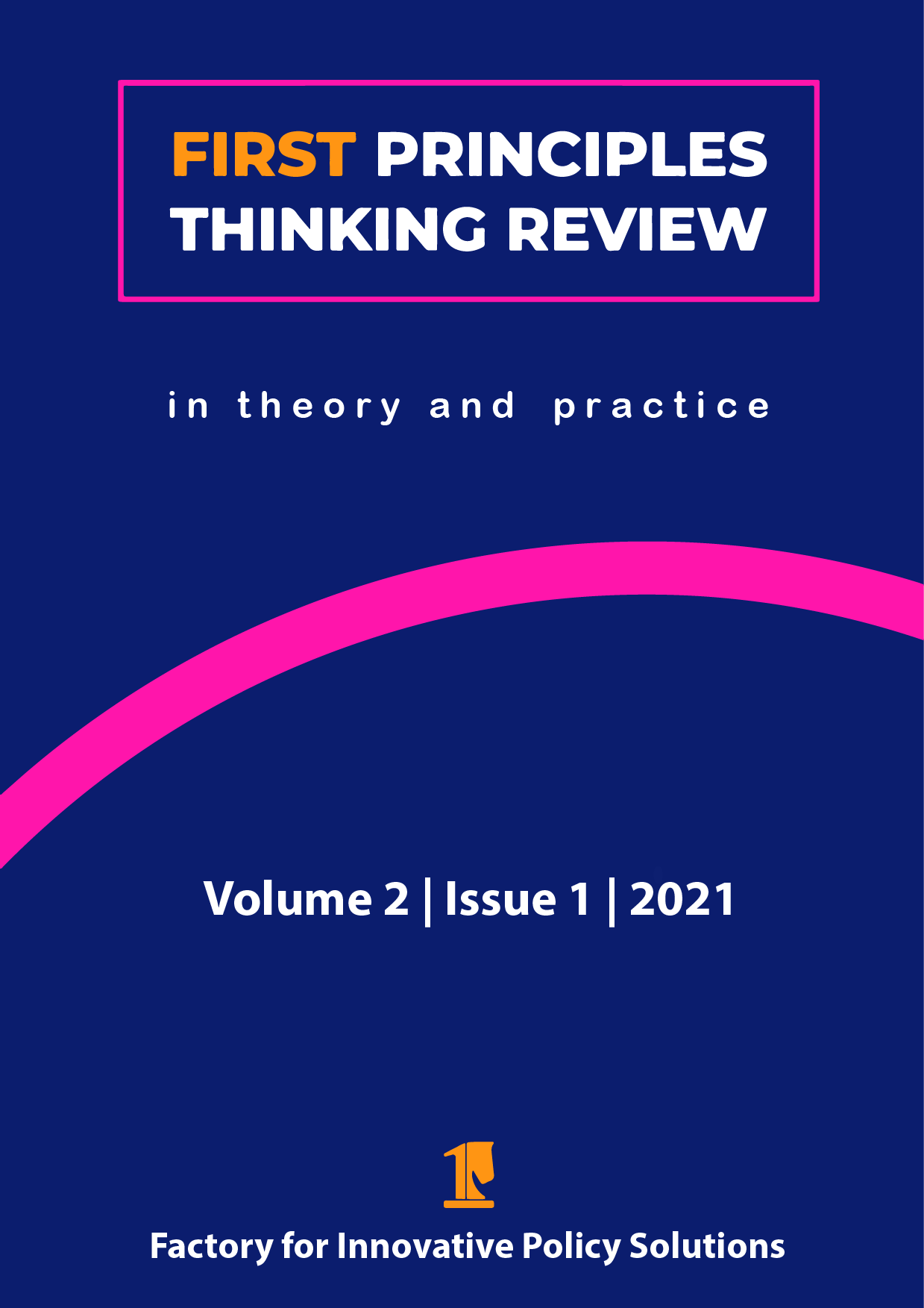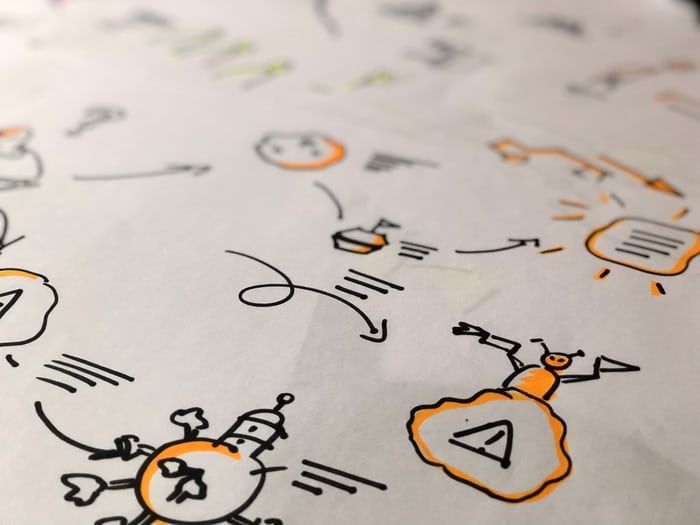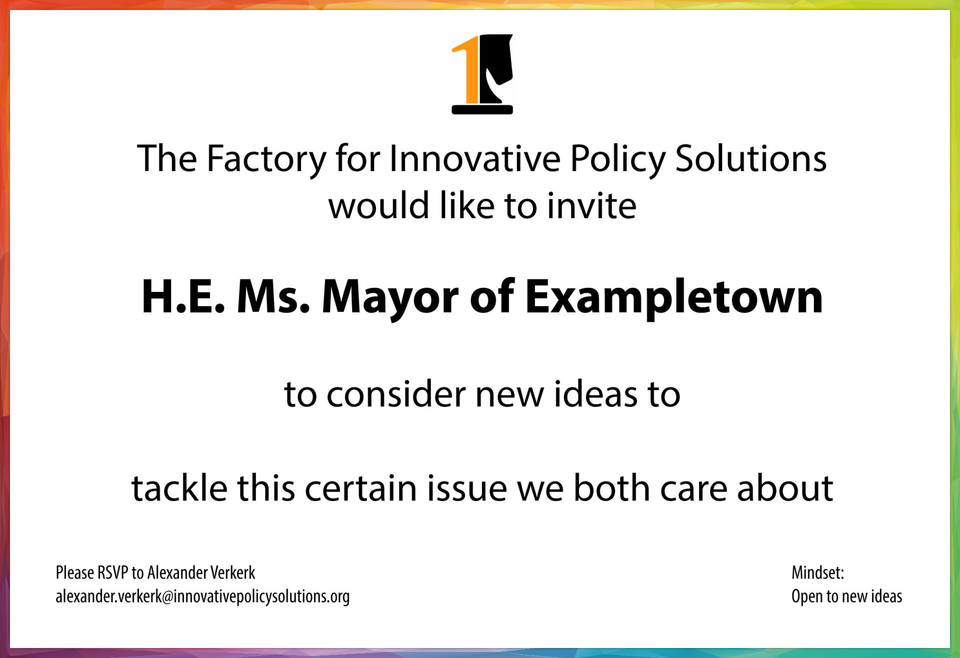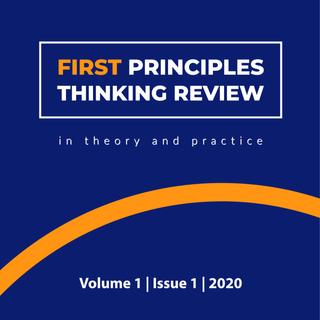FIPS is Built on First Principles
You may be somewhat familiar with the Factory for Innovative Policy Solutions (FIPS) and its aspiration to act as an outlet for the theoretical development and practical application of first principles thinking, with the ultimate goal to contribute to tackling societal challenges. But how did we come into being? And how has first principles thinking (unknowingly) been playing a fundamental role in finding our niche? In this article you will learn about how we embraced two obstacles to tackling societal challenges that spurred our creation: (1) not all societal challenges have effective solutions yet, and (2) promising ideas do not always reach the right people.
Step 1 (identify your objective): Enable anyone to contribute to tackling societal challenges
When you look outside, read the news or talk to your friends, do you also observe numerous societal challenges you wish to be resolved? FIPS was founded in 2018 by a few friends who regularly discuss today's challenges in the world; from the displacement of Rohingyas in Myanmar to loneliness among the elderly in Denmark in times of COVID19-related restrictions. Like you, we wish to enable anyone to contribute to tackling such challenges. This would become our objective.
Step 2 (list your obstacles): I cannot come up with new solutions nor would anyone listen if I did
According to the first principles thinking method you should identify the obstacles that prevent you from achieving your objective. Although, at the time, we were not familiar with the method, we thought it would be a good idea to do exactly this. Expectedly, we identified a million obstacles as to why you and I struggle to contribute to tackling societal challenges. Instead of wanting to tackle them all, we began with two obstacles that we thought to be both meaningful and within our sphere of influence:
First, I cannot come up with new solutions. The challenges you see around you can appear intimidating, so we might think: “How could I, or anyone, ever mitigate climate change, world hunger, or the spread of a coronavirus? I surely need to be a creative genius and an expert on the challenge in question to be able to come up with new solutions.”
Second, I cannot get my ideas to reach people in a position to help tackle the challenge in question, nor would I be taken seriously if I could. “What should I do with my ideas? Will someone influential pick them up if I share them on Facebook? Would they even notice them if I simply sent my ideas via email?”
Step 3 (question your assumptions): Do I really need to be a creative genius or renowned expert?
What if I tell you that these obstacles may very well just be in your head, shaped by your personal assumptions? The next first principles thinking step aims to uncover and challenge these assumptions by asking so-called ‘Socratic Questions’. Basically, this means doubting everything you could possibly doubt so that you can continue your search for new ideas on a more factual basis and with an open mind.
Idea generation . With regard to the first obstacle, we asked ourselves questions such as: “Do I really need to be a creative genius or an expert? Why do I think that? Would I say yes if someone asked me to bet some money on it? Are there instances of ‘regular’ people coming up with amazing solutions?”
Idea delivery . With regard to the second obstacle, we asked similar questions: “Are there really no channels through which I can voice my ideas? Will they really not listen to me? What if this is wrong? Are there instances of ideas of ‘regular’ people reaching the implementation table?”
Acting stupid can be truly liberating.
Step 4 (discover your first principles): Systematic innovation through first principles thinking and idea delivery through an organisation
With an open mind we continued our search, with a layover in First Principles Town, where we tried to get to the fundamental truths of our obstacles. To identify these ‘first principles’, we answered the questions in the previous step and asked additional truth-seeking questions.
Idea generation. With regard to the first obstacle, we realised that you don’t need to be a creative genius or expert to come up with groundbreaking ideas. Numerous innovations have actually been accidental: matches were invented when chemist John Walke accidentally scraped a stick coated in chemicals across his hearth and found that it caught fire. We continued to wonder: “Does innovation always need to be accidental? Can innovation be forced? Is there perhaps an accessible and systematic approach to innovation?” When querying this question in a search engine we stumbled upon a first principle: indeed there are systematic approaches to problem-solving, among which, first principles thinking!
Idea delivery . Being somewhat familiar with first principles thinking, we embarked on the second obstacle and realised that chances are indeed quite small for your idea to get picked up by influential people. Again, we started to wonder: “Who do influential people listen to? What makes them listen?” We figured it could be helpful for one’s credibility if ideas are conveyed through an established organisation. We considered this a first principle to effective delivery.
Step 5 (come up with new ideas): Education and a cool logo
Then it was time to consider how these first principles can be used to overcome the selected obstacles by asking ‘how-questions’.
Idea generation . With regard to the first obstacle and associated first principle, we started asking how-questions: “How can we use first principles thinking to enable people to contribute to tackling societal challenges?” We figured they would have to be familiarised with the method.
Indeed, this is not really an idea that is ready for implementation yet, so we returned to the previous step in search for additional first principles. “When do people want to learn?” A quick query in our search engine led us to John Munro’s paper Motivating learning: Why do we learn? He found, among other factors, that people are more likely to learn when they can do so through different channels.
With this first principle in mind we continued asking how-questions. “How can we teach first principles thinking through various channels that are both attractive and accessible?” Naturally, the idea of creating various learning aids, ranging from a step-by-step manual and explanatory videos to an online course and real life workshops, emerged. After all, the more people actively apply this method the higher the chances are of producing groundbreaking ideas to tackle societal challenges.
Idea delivery . We confidentially embarked on the second obstacle and first principle, and again asked how-questions such as: “How can we create a credible organisation that people listen to?” A cool name, neat logo and fresh website could go a long way, we thought. And a registration at the chamber of commerce, obviously. At the same time we did not want to overdo it, so instead of calling ourselves an institute we settled on being a factory.
Step 6 (refine your ideas): Deliver ideas in the form of an invitation
Ideas are simply ideas until they become solutions. For an idea to evolve into a solution, it might help to take the context into account. And so we continued asking questions to make the ideas more concrete and tailored to the task at hand.
Idea generation . “What else can we do to make the learning aids more attractive? And how can we enthuse them to apply it to societal challenges?” This led us to refined ideas such as:
- Enable learners to apply as they learn (for example by including a do-it-yourself section with empty text boxes in the manual)
- Have editors work with learners to turn their learning output into an article for publication
- Publish the articles on the website and in the First Principles Thinking Review
- Deliver their articles to people who can actually help implement the ideas in practice
- Give learners a first principles thinking certificate
Idea delivery . We also wanted to refine our ideas on effectively delivering ideas, so we asked: “What else can we do to effectively deliver our ideas? What kinds of texts, emails and documents do influential people read? What actually physically ends up at their desks?” Instead of querying this in our search engine to find answers (first principles) we thought of one ourselves: Invitations! And again we asked how-questions: “How can we deliver the ideas as an invitation?” Indeed, the answer is in the question itself. This led us to the following idea:
- Deliver the ideas in the form of an invitation
Step 7 (select your solutions): Let’s just try and tweak!
Do these ideas actually enable anyone to contribute to tackling societal challenges? In isolation, probably not. Several other ingredients are necessary to have an impact, not to forget: dedicating your blood, sweat and tears!
Numerous other ideas were manufactured and new ones are still being added to our idea list. What we have been doing so far is simply trying ideas such as the ones presented in this article, asking users for feedback and continuing to tweak according to new insights, which would preferably be first principles.
Conclusion
Indeed, the birth of FIPS was no linear process: we occasionally switched between identifying first principles, generating ideas and refining them into potential solutions. In my experience this is actually quite typical of first principles thinking. Better yet, the fact that the steps can be followed fluidly is one of its main strengths!
What I furthermore found useful is that first principles thinking encouraged us to ask questions that have brought us closer to our current form and methods. While delivering ideas in the form of an invitation is not extremely innovative, it is definitely an idea worth exploring that we might not have come up with by way of a regular brainstorm. I am curious how first principles thinking will continue to guide us in our aspiration to enable anyone to contribute to tackling societal challenges.
If you have additional ideas on how we can advance our project, I’d be happy to hear them! Please let me know here: alexander.verkerk@innovativepolicysolutions.org
References
John Munro (n.d.)Motivating learning: Why do we learn? Published on ResearchGate, https://www.researchgate.net/file.PostFileLoader.html?id=54c3fb99d039b1cd328b4633&assetKey=AS%3A273680519630849%401442261928601
Apply first principles thinking yourself?
Would you like to apply first principles thinking yourself and have your problem-solving experience published in the First Principles Thinking Review? Then be sure to check out the submission guidelines and send us your rough idea or topic proposal. Our editorial team would be happy to work with you to turn that idea into an article.
Share this page
Disclaimer : The views, thoughts and opinions expressed in submissions published by FIPS reflect those of the authors and do not necessarily reflect the views held by FIPS, the FIPS team or the authors' employer.
Copyrights : You are more than welcome to share this article. If you want to use this material, for example when writing an article of your own, keep in mind that we use cc license BY-NC-SA. Learn more about the cc license here .
What's new?
